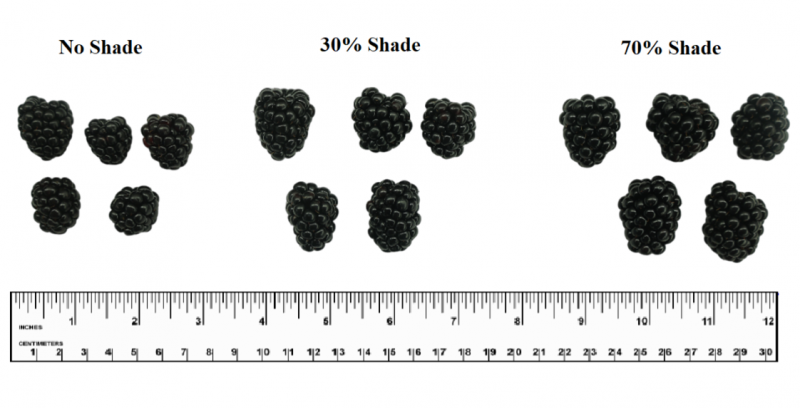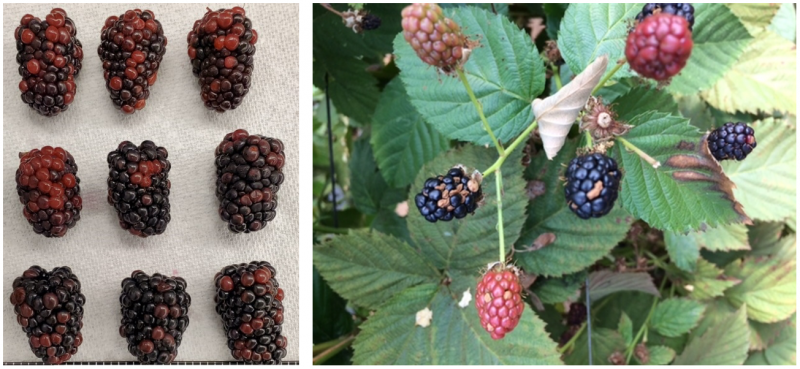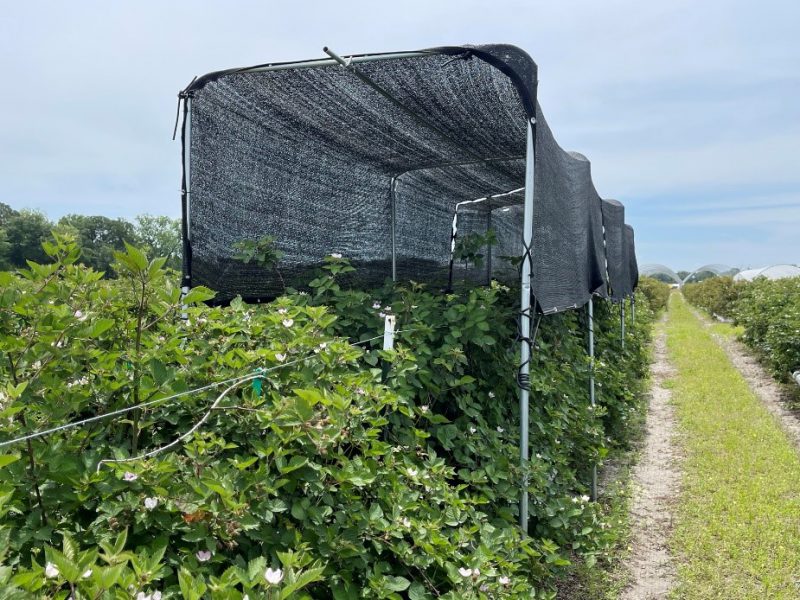Xinwei Liu, & Muhammad Shahid, UF Horticulture Sciences Department, and UF/IFAS North Florida Research and Education Center
Blackberry, in the genus Rubus of the family Rosaceae, is a nutritious fruit that is gaining increasing popularity. Blackberries are known as a beneficial fruit for the human body, being rich in essential vitamins, minerals, fiber, and bioactive compounds. These compounds have potential ability to boost brain health, improve skin complexion, and even help prevent cancer. Blackberry, native to southeastern United States, grows well in mild climates. Florida does have some native blackberry cultivars, but the berries tend to be small and lack uniform flavor, plus they have thorns. Recently, new blackberry cultivars are emerging in Florida that aim to improve berry quality and meet market requirements. However, the subtropical climate of Florida poses some limitations for growing blackberries. One major problem is heat stress during flowering and harvest season, which can lead to low yield, decreased flavor, reduced bioactive compounds, and red drupelet discoloration.
–
Shading could be a viable option to protect blackberry plants from elevated temperatures in Florida. Shade cloths are designed to block sunshine and radiation, which can effectively influence the photosynthetic rate, reduce berry sunburn, and mitigate heat stress. The primary purpose of shade structure for blackberry plants is to reduce solar radiation, cool leaf temperature and modify light quality and quantity. Heat stress can cause a morphological reaction in plants such as leaf scorching, shoot growth inhibition, fruit damage, and yield reduction. This is often accompanied by secondary stress like water deficiency and oxidative stress. At the metabolic level, heat stress damages the photochemical reactions in thylakoid lamellae, which are sensitive to temperature changes. As photosynthesis provides the fundamental source of carbon and energy accumulation, its disruption can result in poorer berries quality and inconsistent flavor.
–
Shade cloths are designed to block an amount of solar radiation and energy at the wavelengths plants utilize for photosynthesis (from 350 to 800 nm). Reducing the amount of solar energy or altering light quality affects photomorphogenesis in plants, eliciting responses mediated by various proteins and phytochrome, including abscisic acid (ABA) and ethylene. In addition, shading reduces the temperature of plants, soil, and air, while also decreasing wind speed and increasing humidity. These changes in factors related to plant transpiration, photosynthesis and respiration ultimately affect overall plant quality.

Figure3. Different shade intensities improved the fruit size and internal fruit quality. Credit: Shahid Iqbal
–
Research trials on the effect of different shade intensities, shade colors, shade materials, and duration of shading are on-going at Fruit Physiology Lab, North Florida Research and Education Center, Quincy.


